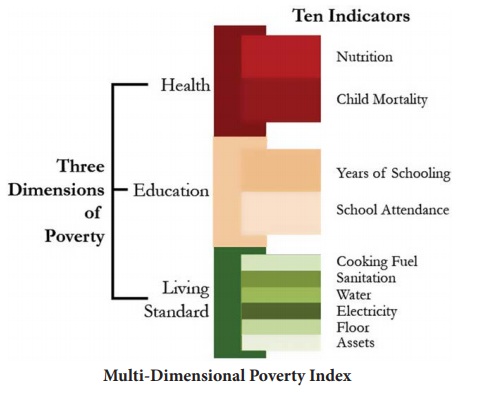Food Security and Nutrition | Economics - Multi-dimensional Nature of Poverty | 10th Social Science : Economics : Chapter 3 : Food Security and Nutrition
Chapter: 10th Social Science : Economics : Chapter 3 : Food Security and Nutrition
Multi-dimensional Nature of Poverty
Multi-dimensional Nature of Poverty
The Multi-dimensional Poverty Index (MPI) was
launched by the United Nations Development Programme (UNDP) and the Oxford
Poverty Human Development Initiative (OPHI) in 2010. The basic philosophy and
significance of MPI is that it is based on the idea that poverty is not
unidimensional, and that it is rather multi-dimensional.
Multi-dimensional poverty is made up of several
factors that constitute poor people’s expe-rience of deprivation such as
health, education, living standards, income, disempowerment, quality of work
and threat from violence.
Multi-dimensional Poverty Index 2018 Report in Tamil Nadu
Over the
last decades, Tamil Nadu has made a significant progress in poverty reduction.
The districts in Tamil Nadu are classified into three categories, namely
high-poverty districts (more than 40% of the population living below poverty line),
moderately poor districts (30% to 40%) and low level poverty districts (below
30%).

After
1994, poverty has declined steadily in both rural and urban areas of Tamil Nadu
and the state has a smaller share of India’s poor relative to its population.
After 2005, the poverty reduction in this state has been faster than in many
other states in India. Tamil Nadu leads in the poverty alleviation programmes
during 2014–2017. Government of India is implementing many policies and programmes
to eradicate poverty.
These
policies and programmes, if continued, will completely eradicate the poverty in
the state. In future, Tamil Nadu can become a model of development in india.
Top and Bottom MPI districts in Tamil Nadu

Related Topics